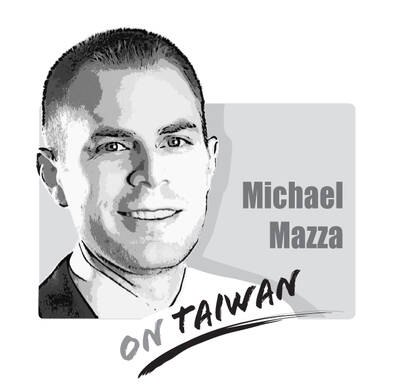China loves to brag that it is home to a market of 1.4 billion consumers, and it frequently uses this statistic to entice Taiwan and other countries into its poisonous embrace.
Time and again, Beijing has employed a “cultivate, trap, kill” strategy. This entails using the allure of the market to attract foreign investment and businesses to set up production facilities, and then steal their agricultural and industrial technologies and use their know-how to develop its own firms.
Once these domestic competitors are powerful enough, Beijing uses every excuse under the sun to impose restrictions on the import of foreign products.
Due to their overexposure to the Chinese market, to which they now have no access, many of the foreign companies are forced out of business. In the final step, the Chinese competitors move in and mop up their overseas markets.
For example, a milk fish exporter in Tainan’s Syuejia District (學甲) several years ago signed an agreement with a Chinese company, which then turned around and resold the milk fish back into the Taiwanese market at rock-bottom prices.
It was a direct attack on the Taiwanese market and caused immense damage. It serves as a lesson on the threat posed by China’s mercantilist policies.
This strategy is often extremely effective, but this time Beijing’s diabolical scheming to destroy Taiwan’s pineapple industry looks set to backfire in its face.
This is because China on annual average imports only little more than 50,000 tonnes of pineapples from Taiwan.
Last year, as a result of COVID-19, this fell to 40,000 tonnes. Taiwanese have realized that China’s much-vaunted 1.4 billion consumers did not add up to that much after all: It is all just brag and bluster.
Taiwan’s population of 23 million is minuscule by comparison, yet Taiwan every year imports 17 billion yuan (US$2.62 billion) of beer from China.
Irked by China’s pineapple embargo, Taiwanese consumers and firms quickly bandied together to support local pineapple farmers: Within just two days, Taiwanese had pledged to buy nearly 20,000 tonnes of local pineapples, and within four days, the lost sales had been by made up for by domestic demand.
Not only have Beijing’s pineapple shenanigans come back to bite it, the episode has spurred Taiwanese to decouple the nation’s economy from China’s and stirred talk of a reciprocal beer boycott.
If Taiwanese consumers were to unite around a boycott of Chinese beer, not only would it deal a double-whammy to Beijing, but it would also prove that Taiwan no longer has to suffer in silence and meekly submit to Beijing’s bullying.
In the future, China’s leaders might be deterred from weaponizing trade as part of its “united front” strategy now that the cat is out of the bag.
Most important, the “pineapple war” has united Taiwanese perhaps as never before, and this cohesive spirit will only grow stronger should Beijing rashly decide to further antagonize Taiwan.
John Yu is a civil servant.
Translated by Edward Jones

Could Asia be on the verge of a new wave of nuclear proliferation? A look back at the early history of the North Atlantic Treaty Organization (NATO), which recently celebrated its 75th anniversary, illuminates some reasons for concern in the Indo-Pacific today. US Secretary of Defense Lloyd Austin recently described NATO as “the most powerful and successful alliance in history,” but the organization’s early years were not without challenges. At its inception, the signing of the North Atlantic Treaty marked a sea change in American strategic thinking. The United States had been intent on withdrawing from Europe in the years following
My wife and I spent the week in the interior of Taiwan where Shuyuan spent her childhood. In that town there is a street that functions as an open farmer’s market. Walk along that street, as Shuyuan did yesterday, and it is next to impossible to come home empty-handed. Some mangoes that looked vaguely like others we had seen around here ended up on our table. Shuyuan told how she had bought them from a little old farmer woman from the countryside who said the mangoes were from a very old tree she had on her property. The big surprise
The issue of China’s overcapacity has drawn greater global attention recently, with US Secretary of the Treasury Janet Yellen urging Beijing to address its excess production in key industries during her visit to China last week. Meanwhile in Brussels, European Commission President Ursula von der Leyen last week said that Europe must have a tough talk with China on its perceived overcapacity and unfair trade practices. The remarks by Yellen and Von der Leyen come as China’s economy is undergoing a painful transition. Beijing is trying to steer the world’s second-largest economy out of a COVID-19 slump, the property crisis and
Former president Ma Ying-jeou’s (馬英九) trip to China provides a pertinent reminder of why Taiwanese protested so vociferously against attempts to force through the cross-strait service trade agreement in 2014 and why, since Ma’s presidential election win in 2012, they have not voted in another Chinese Nationalist Party (KMT) candidate. While the nation narrowly avoided tragedy — the treaty would have put Taiwan on the path toward the demobilization of its democracy, which Courtney Donovan Smith wrote about in the Taipei Times in “With the Sunflower movement Taiwan dodged a bullet” — Ma’s political swansong in China, which included fawning dithyrambs